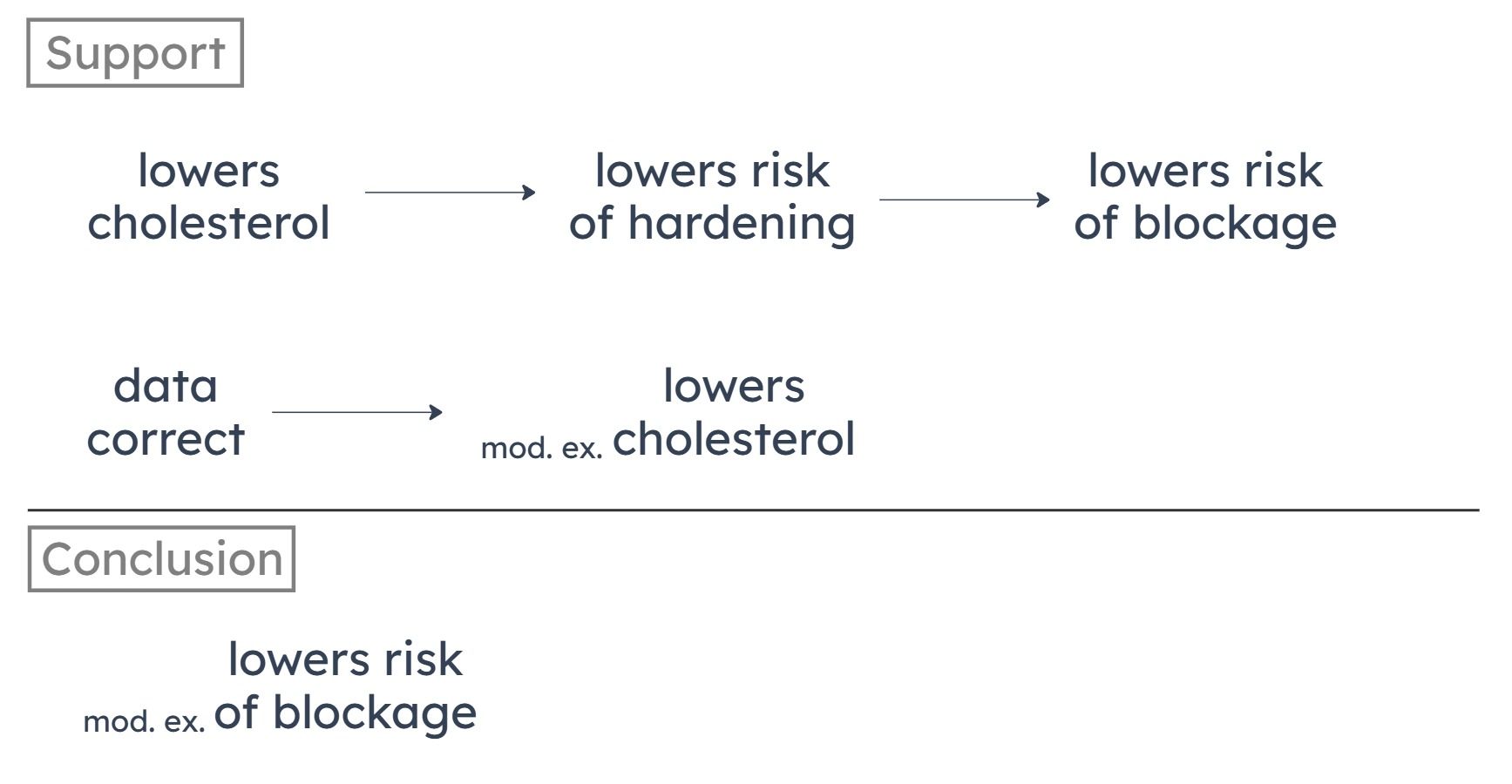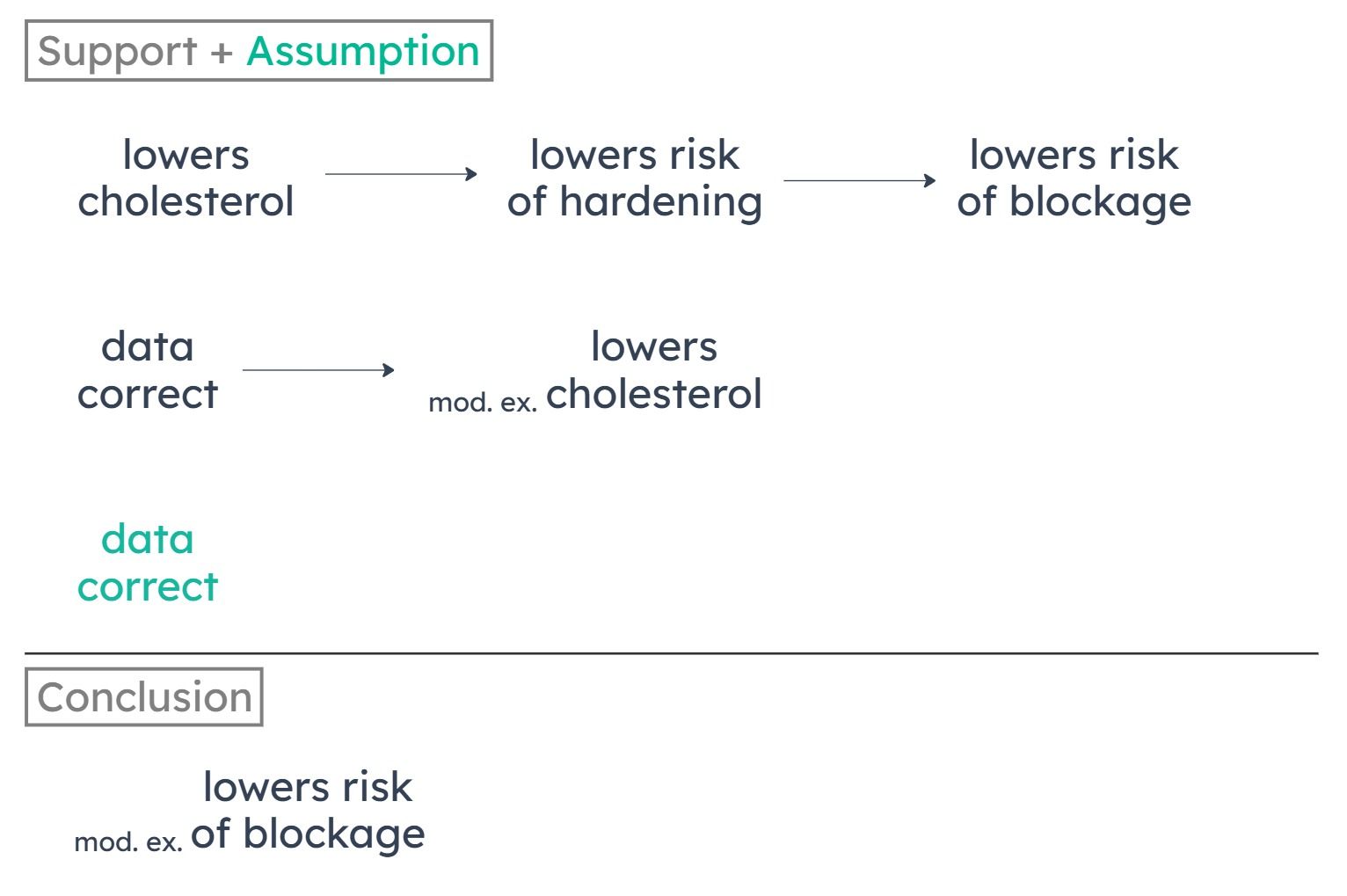LSAT 112 – Section 1 – Question 18
LSAT 112 - Section 1 - Question 18
December 2001You need a full course to see this video. Enroll now and get started in less than a minute.
Target time: 2:03
This is question data from the 7Sage LSAT Scorer. You can score your LSATs, track your results, and analyze your performance with pretty charts and vital statistics - all with a Free Account ← sign up in less than 10 seconds
| Question QuickView |
Type | Tags | Answer Choices |
Curve | Question Difficulty |
Psg/Game/S Difficulty |
Explanation |
|---|---|---|---|---|---|---|---|
| PT112 S1 Q18 |
+LR
| Sufficient assumption +SA Conditional Reasoning +CondR Causal Reasoning +CausR | A
14%
157
B
7%
159
C
36%
157
D
27%
164
E
16%
157
|
160 171 180 |
+Hardest | 147.196 +SubsectionMedium |
J.Y.’s explanation
You need a full course to see this video. Enroll now and get started in less than a minute.
Summary
The author concludes that moderate exercise lowers the risk of blockage of arteries due to blood clots. This is based on the following:
If it lowers blood cholesterol levels, it lowers the risk of arterial blockage due to blood clots.
If the data reported in a recent study are correct, moderate exercise lowers blood cholesterol levels.
If it lowers blood cholesterol levels, it lowers the risk of arterial blockage due to blood clots.
If the data reported in a recent study are correct, moderate exercise lowers blood cholesterol levels.

Missing Connection
To prove that moderate exercise lowers the risk of blockage of arteries due to blood clots, we want to know that moderate exercise lowers blood cholesteral levels. There is a way to prove that — if the data reported in a recent study are correct, then moderate exercise lowers blood cholesterol levels. But do we know whether the data reported in the recent study is correct? No — that’s what’s missing. We want to know that the data is correct.
A
The recent study investigated the relationship between exercise and blood cholesterol levels.
We want to know that the data reported in the recent study is correct. Whether the study investigated the relationship between exercise and blood cholesterol levels doesn’t tell us anything about whether the data is correct.
B
Blockage of the arteries due to blood clots can be prevented.
The argument concerns lowering the risk of blockage of arteries due to blood clots. Whether such blockage can be completely prevented is a separate issue from whether the risk of such blockage can be decreased. In any case, we’re looking for an answer that establishes the data in the study is correct, and (B) doesn’t establish this.
C
Lowering blood cholesterol levels lowers the risk of blockage of the arteries.
This is supported by the premises, but it’s not new information that makes the argument valid. We want to know that the data reported in the study is correct, so that we can establish that moderate exercise lowers blood cholesterol. (C) doesn’t tell us anything about the data.

D
The data reported in the recent study are correct.
(D) allows us to infer that moderate exercise lowers blood cholesterol levels. This inference, combined with the premise establishing that anything that lowers blood cholesterol levels lowers risk of arterial blockage due to blood clots, establishes that moderate exercise lowers such risk of blockage.
E
Hardening of the arteries increases the risk of blockage of the arteries due to blood clots.
This may be supported by the premises, but it’s not new information that makes the argument valid. We want to know that the data reported in the study is correct, so that we can establish that moderate exercise lowers blood cholesterol. (E) doesn’t do this.
Take PrepTest
Review Results
LSAT PrepTest 112 Explanations
Section 1 - Logical Reasoning
- Question 01
- Question 02
- Question 03
- Question 04
- Question 05
- Question 06
- Question 07
- Question 08
- Question 09
- Question 10
- Question 11
- Question 12
- Question 13
- Question 14
- Question 15
- Question 16
- Question 17
- Question 18
- Question 19
- Question 20
- Question 21
- Question 22
- Question 23
- Question 24
- Question 25
- Question 26
Section 2 - Reading Comprehension
- Passage 1 – Passage
- Passage 1 – Questions
- Passage 2 – Passage
- Passage 2 – Questions
- Passage 3 – Passage
- Passage 3 – Questions
- Passage 4 – Passage
- Passage 4 – Questions
Section 3 - Logical Reasoning
- Question 01
- Question 02
- Question 03
- Question 04
- Question 05
- Question 06
- Question 07
- Question 08
- Question 09
- Question 10
- Question 11
- Question 12
- Question 13
- Question 14
- Question 15
- Question 16
- Question 17
- Question 18
- Question 19
- Question 20
- Question 21
- Question 22
- Question 23
- Question 24
- Question 25
- Question 26
Leave a Reply
You must be logged in to post a comment. You can get a free account here.